Understanding Unicoronal Craniosynostosis: Causes and Treatment
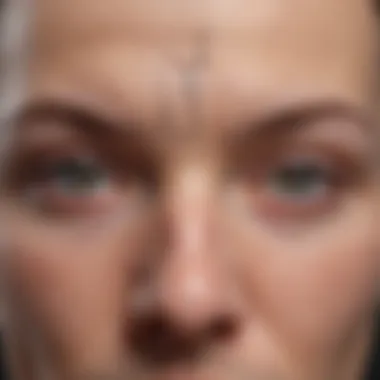
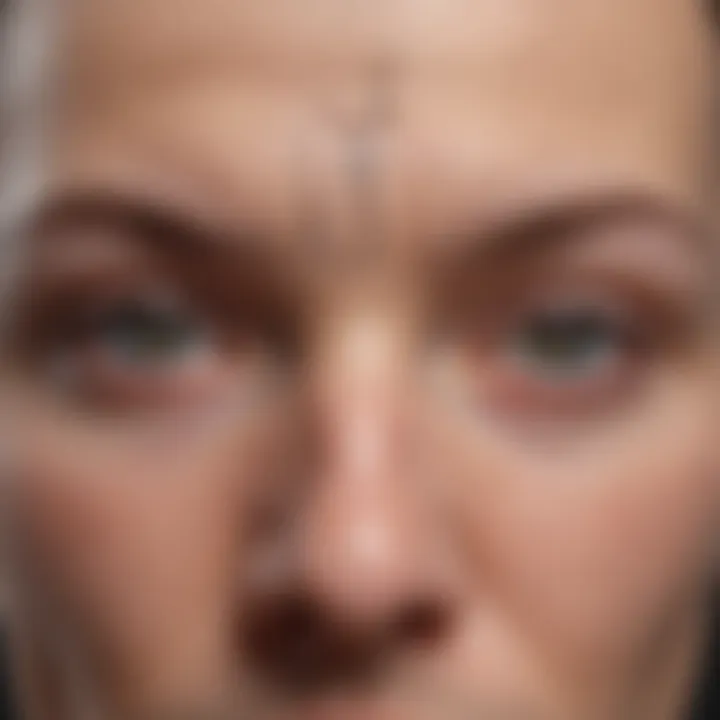
Intro
Unicoronal craniosynostosis is a specific type of craniosynostosis characterized by the premature fusion of one side of the coronal suture in an infant's skull. This fusion alters the shape of the head, often leading to asymmetry and potential developmental challenges. Understanding the etiology, symptoms, and treatment options is essential for healthcare professionals and families affected by this condition. This article aims to provide a comprehensive exploration into unicoronal craniosynostosis, emphasizing its causes, diagnostic strategies, and clinical management. It will be a valuable guide for students, researchers, educators, and medical professionals seeking to enhance their understanding of this complex disorder.
Research Overview
Summary of Key Findings
Research indicates that unicoronal craniosynostosis is more common in males than females. The exact cause of this condition remains unclear; however, genetic factors and environmental influences are believed to play significant roles. The evidence suggests that early diagnosis is crucial in achieving optimal treatment outcomes. Studies also highlight that children with this condition may face challenges in cognitive, social, and emotional development, making interdisciplinary approaches to care essential.
Relevance to Current Scientific Discussions
The topic of unicoronal craniosynostosis is of increasing relevance in pediatric craniofacial research. Insights gained from recent studies continue to shape clinical practices and inform surgical techniques. Moreover, ongoing discussions in the medical community focus on the need for early screening and long-term follow-up for children diagnosed with this condition, given its potential long-lasting effects.
Methodology
Research Design and Approach
The research on unicoronal craniosynostosis typically employs a mix of retrospective and prospective designs. Combining clinical data from patient records with longitudinal studies provides a comprehensive understanding of the condition. Researchers also analyze different treatment modalities and their outcomes over time.
Data Collection and Analysis Techniques
Data is gathered through various methods, including:
- Clinical evaluations
- Imaging studies, such as CT scans
- Parent questionnaires regarding developmental progress
- Academic performance metrics
Analysis techniques often involve statistical methods to compare outcomes across different treatment options, providing insight into the most effective strategies for managing this condition.
Ending
Unicoronal craniosynostosis warrants thorough examination due to its implications on head shape and developmental trajectory. By deepening understanding of its causes, symptoms, and treatment options, we can better serve affected individuals and their families.
Intro to Unicoronal Craniosynostosis
Unicoronal craniosynostosis is a significant medical condition requiring thorough understanding among healthcare professionals and researchers. Addressing this topic is essential as early diagnosis and effective intervention can greatly influence patient outcomes. This article aims to highlight the complexities involved in unicoronal craniosynostosis, bringing clarity to its causes, diagnostic methods, and treatment options.
Definition and Overview
Unicoronal craniosynostosis is defined as the premature fusion of one of the two coronal sutures on the skull. This condition results in an asymmetric shaped head, which may lead to various complications such as increased intracranial pressure, developmental delays, and facial deformities. The significance of this condition is not only medical but also psychological, as it affects the aesthetic appearance of individuals, especially during formative years.
The affected area tends to grow abnormally, resulting in facial asymmetry as the skull does not expand properly. Members of the medical community, particularly pediatricians and neurosurgeons, are encouraged to familiarize themselves with the signs and implications of this condition to ensure timely intervention. Knowledge of unicoronal craniosynostosis promotes better outcomes and improves the quality of life for affected individuals.
Historical Context
Historically, the understanding of craniosynostosis, particularly unicoronal craniosynostosis, has evolved significantly. Early descriptions of skull deformities date back to ancient civilizations, where treatments were limited and often ineffective. With advancements in medical science, especially in the 20th century, the perception of craniosynostosis changed.
In the mid-1900s, researchers began to study the genetic components related to craniosynostosis. Surgical techniques also advanced, shifting from radical procedures to more refined methods that minimize trauma and improve recovery. As a result, the emphasis on early diagnosis and multidisciplinary approaches to treatment has raised awareness and improved methods of care. As knowledge continues to expand, so too does the potential for better outcomes for those with this condition.
Anatomy of the Skull
Anatomy of the skull plays a crucial role in understanding unicoronal craniosynostosis. This condition is characterized by the premature fusion of the coronal suture, which can lead to asymmetry in head shape and potentially impact brain development. A detailed look at skull anatomy can provide insight into how these sutures function and how their disruption can affect overall health. The skull is made of several bones, and the interactions between these bones at the sutures are essential for normal growth and development.
Cranial Sutures
Cranial sutures are fibrous joints that connect the bones of the skull. These connections are important because they allow for growth in the skull during infancy and childhood. The main sutures include the sagittal, lambdoid, squamous, and coronal sutures. Each plays a specific role in maintaining the shape and support for the head. The coronal suture runs across the top of the skull from ear to ear and separates the frontal bone from the parietal bones.
The premature closure of the coronal suture, seen in unicoronal craniosynostosis, causes the skull to grow differently. Instead of expanding evenly, compensatory growth occurs in other areas, leading to changes in head shape, which may be observable at birth or shortly after. Understanding these patterns of skull growth is vital for correct diagnosis and treatment.
Coronal Suture Significance
The coronal suture holds particular significance for several reasons. Firstly, it separates the frontal lobes from the parietal lobes of the brain. Disruption in growth at this suture can lead to notable cosmetic deformities and developmental challenges. Secondly, it serves as a key indicator in diagnosing craniosynostosis. A careful assessment of the coronal suture can reveal patterns that suggest the presence of this condition. An anteriorly positioned forehead is one such example, leading to concerns about potential neurological implications.
Moreover, the coronal suture's role in skull architecture highlights the necessity of timely intervention. If the suture has fused early, immediate steps need to be taken to prevent further complications. Early surgical intervention not only addresses the cosmetic concerns but also aims to optimize brain development, further underscoring the importance of understanding the coronal suture in this context.
"A thorough comprehension of cranial sutures is not only vital for diagnosing craniosynostosis but also essential for guiding surgical strategies that enhance outcomes for affected individuals."
Understanding the anatomy provides foundational knowledge. This knowledge aids healthcare professionals in making informed decisions regarding diagnosis and treatment pathways. By comprehending the anatomy of the skull, one can appreciate the complexity of craniosynostosis and its implications.
Etiology of Unicoronal Craniosynostosis
Understanding the etiology of unicoronal craniosynostosis is crucial for comprehending this condition. The term refers to the early fusion of the coronal suture in an infant's skull. This fusion can create a variety of developmental and physical consequences. Knowing the causes helps in early diagnosis and strategic treatment approaches. Furthermore, insights into the etiology can guide research for preventing the condition or mitigating its impacts.
Genetic Factors
Genetic factors play a significant role in unicoronal craniosynostosis. The hereditary aspect suggests that certain genetic mutations are linked to the premature closure of cranial sutures.
Some known syndromes include:
- Crouzon syndrome: This condition involves multiple fusion of skull sutures and often includes facial deformities.
- Apert syndrome: Similar to Crouzon, it is characterized by fusion of fingers and toes alongside skull sutures.
These syndromes suggest a connection between genetic variations and craniosynostosis. However, not all cases are associated with these genetic disorders. Research is still ongoing to identify other potentially related genes, which may influence both the development of the skull and the presence of this condition.
Genetic testing might be a recommendation for families with a history of craniosynostosis. Finding specific genetic markers can provide valuable information on risks for future siblings or implications for treatment.
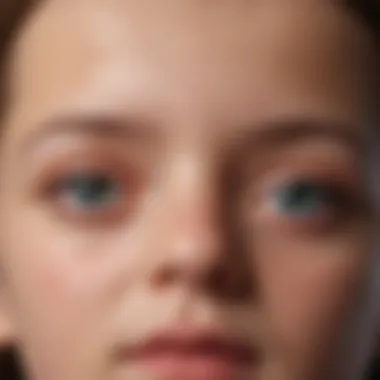
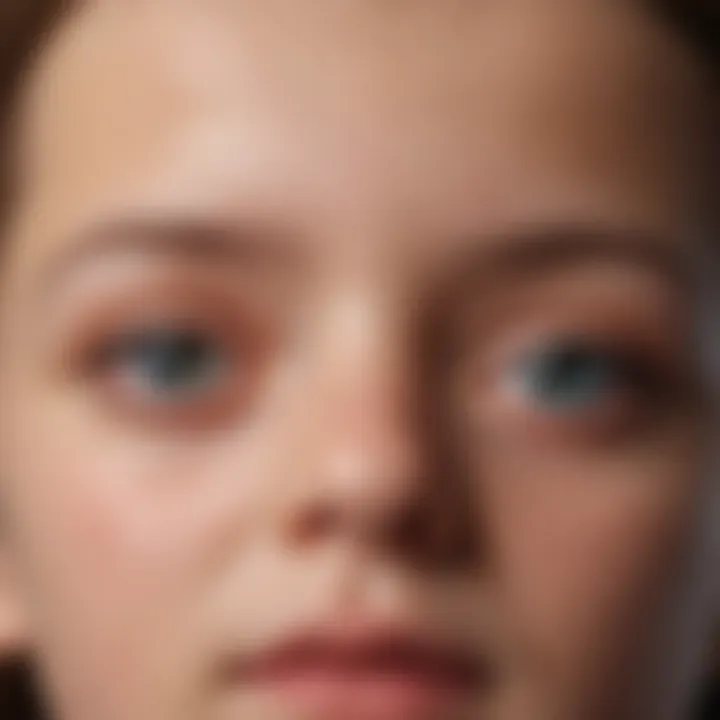
Environmental Influences
Environmental influences can also contribute to the occurrence of unicoronal craniosynostosis. While genetic factors are critical, various external elements interact with genetic predispositions.
Some environmental factors to consider include:
- Maternal health: Conditions like diabetes, obesity, or vitamin deficiencies during pregnancy can influence fetal development and increase risks.
- Exposure to substances: Certain medications, smoking, and alcohol consumption during pregnancy have been suggested to contribute to abnormal skull formation.
- Fetal positioning: The position of the fetus in the womb might also play a role. If restricted, it may place undue stress on the skull, leading to early suture closure.
Research shows the need for more investigation into how environmental aspects can either trigger or exacerbate genetic predispositions. Understanding these influences aids in developing preventive strategies and identifying at-risk individuals.
"The interplay of genetics and environment is vital in the prognosis and treatment approach for individuals with unicoronal craniosynostosis."
In summary, both genetic and environmental factors play significant roles in the etiology of unicoronal craniosynostosis. A comprehensive understanding of these aspects is essential in aiming for effective intervention methods.
Clinical Presentation
The clinical presentation of unicoronal craniosynostosis is crucial for understanding this condition. Clinicians and caregivers must recognize the signs and symptoms early to ensure timely intervention. Identifying the specific physical characteristics associated with this condition can guide further evaluation and treatment. Moreover, understanding the potential associated conditions provides a broader context for managing a child's health comprehensively.
Symptoms in Infants
Infants with unicoronal craniosynostosis typically exhibit a range of symptoms. The most prominent indicator is an asymmetrical head shape, which can be noticed shortly after birth. Parents may observe a noticeable flattening on one side of the forehead and the eyebrow of the affected side may appear lower. This condition often leads to a characteristic facial feature called brachycephaly, where the skull is wider than normal.
Other common symptoms may include:
- Developmental delays: Although not all children with this condition will experience delays, some may show slower progress in reaching developmental milestones.
- Eye irregularities: Strabismus, or crossed eyes, can occur due to the altered shape of the skull impacting ocular alignment.
- Hearing issues: Some infants may show early signs of hearing deficits, which is potentially linked to the structural changes in the skull.
- Notable physical signs: These can include a prominent forehead and a slope of the forehead that is distinctively noticeable ( in severe cases).
Recognizing these symptoms allows for tailored evaluations by health professionals, enabling more effective pathways for treatment.
Associated Conditions
Unicoronal craniosynostosis does not occur in isolation. It can be associated with several other conditions that can further complicate the clinical picture. Understanding these associated conditions is vital. Some of them include:
- Williams Syndrome
- Apert Syndrome
- Crouzon Syndrome
- Pfeiffer Syndrome
These syndromes have their own set of complications, which can impact management strategies. For example, a child with Apert syndrome may require additional surgical procedures due to more complex skull and facial anomalies.
Recognizing associated conditions is essential for comprehensive care. Caregivers must be vigilant and proactive, considering referrals to specialists such as geneticists or neurologists. This multidisciplinary approach can significantly improve health outcomes for children with unicoronal craniosynostosis.
Diagnostic Approaches
The diagnostic approaches for unicoronal craniosynostosis are critical for accurate identification and timely intervention. Early and precise diagnosis can significantly impact the treatment process and long-term outcomes for affected individuals. The methods utilized include physical examination, radiologic evaluation, and genetic testing, each playing a unique role in assembling a full clinical picture of the condition.
Physical Examination
A thorough physical examination forms the cornerstone of the diagnostic process. During this assessment, a healthcare professional observes the shape and symmetry of the infant’s head. Key indicators include frontal flattening on the affected side, often associated with brow prominence. The examination also assesses the general appearance and alignment of facial features. A notable clinical indicator is the asymmetry between the right and left sides of the skull.
Parents or guardians may also be asked detailing any observed changes to the child’s head shape over time. This requires attentive observation, as many symptoms may not be immediately evident. The practitioner’s experience in recognizing cranial deformities adds an essential layer to the diagnostic approach.
Radiologic Evaluation
Radiologic evaluation serves as a critical adjunct to the physical examination. Imaging studies, particularly cranial CT scans, provide detailed insight into the suture patterns and overall skull structure. CT scans enable assessment of fusion at the coronal suture and any compensatory changes in surrounding sutures.
These imaging techniques aid in confirming the diagnosis and help in surgical planning. The detailed visualization of skull anatomy can reveal associated pathologies. It is important for healthcare providers to interpret these images carefully, as they must distinguish between normal variation in head shape and true craniosynostosis.
Genetic Testing
Genetic testing is an integral component of the diagnostic landscape. While not all cases of unicoronal craniosynostosis have an identifiable genetic basis, certain syndromic associations warrant further exploration. Testing can elucidate genetic conditions such as Apert syndrome or Crouzon syndrome that may co-occur with craniosynostosis.
By identifying specific genetic anomalies, families can gain crucial information regarding risks for future pregnancies and potential developmental concerns. Genetic counseling may also benefit families as they navigate these findings.
"Timely and accurate diagnosis of unicoronal craniosynostosis can lead to improvements in management and outcomes."
Surgical Interventions
Surgical interventions play a crucial role in the treatment of unicoronal craniosynostosis. Early diagnosis often leads to appropriate timing of surgery, which is integral to prevent potential complications. Ensuring that the skull can grow normally is essential for both aesthetic and functional outcomes. The intervention allows for the correction of head shape and relieves any pressure that may be affecting brain development.
Indications for Surgery
Surgery is typically indicated for infants diagnosed with unicoronal craniosynostosis. Key factors influencing the need for surgical intervention include:
- Abnormal head shape or asymmetry
- Increased intracranial pressure
- Evidence of neurological delays
The decision to pursue surgery is generally based on clinical evaluations and imaging studies that help assess the extent of cranial deformation. Parents and caregivers must closely collaborate with healthcare providers to determine the best course of action.
Techniques Used
Various surgical techniques can be employed to correct the fusion of the coronal suture. The most common procedures include:
- Cranial Vault Remodeling: This technique reshapes the skull by rearranging the bones of the cranial vault. It allows for adequate space for the brain and improves head shape.
- Endoscopic Strip Craniectomy: A less invasive option suited for younger infants, this procedure involves the removal of the fused suture using an endoscope. This technique minimizes damage to surrounding tissue and promotes faster recovery.
Surgeons typically select the method based on the age of the patient and the severity of the condition.
Postoperative Care


Postoperative care is critical for the successful recovery of infants undergoing surgery for unicoronal craniosynostosis. Key aspects include:
- Monitoring for Complications: Health care professionals will observe the child for any signs of infection or complications related to surgery.
- Pain Management: Appropriate pain relief measures are necessary to ensure comfort during recovery. Parents and caregivers should be educated on how to manage pain effectively.
- Follow-Up Appointments: Regular follow-ups are essential for assessing recovery and ensuring that the head shape develops properly over time.
Effective postoperative care can significantly influence the long-term outcomes for children with unicoronal craniosynostosis.
In summary, the surgical option is fundamental in managing unicoronal craniosynostosis. Timely surgery can prevent complications and support normal development, marking a significant step in the treatment of this cranial condition.
Non-Surgical Management
Non-surgical management of unicoronal craniosynostosis is a significant component of the overall care strategy. Not every case requires immediate surgical intervention, and early recognition of the condition can pave the way for effective non-invasive strategies. The importance of this approach lies in its ability to provide support and assessment during the critical early stages of a child's development. Utilizing observation and therapeutic measures, healthcare providers can carefully monitor the condition while considering the best pathway for treatment in the future.
Observation Strategies
Observation strategies are fundamental in the non-surgical management of unicoronal craniosynostosis. They allow for careful tracking of the child's head shape, growth patterns, and any potential developmental delays. Regular follow-up appointments help determine whether the condition progresses in a way that necessitates surgery.
Parents and caregivers are encouraged to collaborate with pediatric specialists to assess the need for intervention over time. Detailed note-taking during these visits can facilitate consistent monitoring. Factors observed may include:
- Head shape changes
- Developmental milestones
- Any signs of increased intracranial pressure
Making observations during the first few months may reveal whether the child's skull is adapting naturally. Some children may experience enough growth in the skull to minimize shape abnormalities.
Therapeutic Measures
In addition to observation, various therapeutic measures may be employed in the non-surgical management of unicoronal craniosynostosis. These measures aim to support the child's overall development and address any immediate concerns. While they do not replace surgical strategies, they play a crucial role in maximizing the child's potential.
Common therapeutic measures include:
- Physical Therapy: It can help in addressing neck stiffness and promoting a better range of motion, especially if the child has developed a preference for one head position.
- Occupational Therapy: This may assist with developmental skills, ensuring that the child meets key developmental milestones alongside their peers.
- Parental Education: Educating parents about the condition supports better understanding and enables them to advocate for their child's needs effectively.
Overall, these measures help convert the potential risks associated with unicoronal craniosynostosis into opportunities for better growth and development.
The focus on non-surgical management provides essential insights into whether surgical intervention is necessary later in the child’s life.
Impact on Development
Understanding the impact that unicoronal craniosynostosis has on development is crucial. This condition can have long-term effects on both cognitive and physical aspects of growth. These impacts stem from the pressures exerted on the developing brain and the resulting distortions in cranial shape. Addressing these concerns enables clinicians, parents, and caregivers to take appropriate action to support the developmental needs of children with this condition.
Cognitive Outcomes
Cognitive outcomes for children with unicoronal craniosynostosis can vary. Early disruption to brain development may lead to challenges in areas such as learning and social interaction. Recognition of these potential issues is important. Studies suggest that children may face a higher risk for psychiatric disorders, particularly attention deficits and learning disabilities. Despite these concerns, many children also demonstrate resilience and adapt well with proper interventions.
Parents should observe their child's cognitive development closely. Benefits include early assessments and intervention when needed. Engaging with educational resources can further enhance their learning experiences. Additionally, learning support can help tailor approaches suited to individual needs. Through proactive involvement, parents and educators can foster an environment that nurtures cognitive growth.
Physical Development
Physical development in children with unicoronal craniosynostosis is another significant factor. The structural differences in the skull can lead to alterations in facial symmetry and head shape, influencing the child's overall appearance. These changes may also affect functionality. Issues such as vision problems or hearing loss can occur. Thus, regular check-ups are essential for monitoring these aspects.
Children affected by this condition need support in their physical development to ensure healthy growth. Aspects to consider include:
- Physical therapy: Helps in enhancing motor skills and coordination.
- Regular evaluations: Assessing growth milestones can help identify any delays.
- Social integration: Encouraging interactions with peers may promote confidence and improve physical agility.
The focus on both cognitive and physical aspects of development reveals the complex nature of unicoronal craniosynostosis. The management of this condition should prioritize addressing these developmental outcomes. By doing so, a more comprehensive support system can be provided, ultimately leading to better long-term results.
Long-Term Prognosis
The long-term prognosis of individuals with unicoronal craniosynostosis is an essential aspect of understanding the condition. It encompasses various outcomes that can significantly affect an individual's quality of life. These outcomes include cognitive development, physical health, and overall psychological well-being.
Potential Complications
Unicoronal craniosynostosis can lead to several complications if not managed appropriately. These complications may arise early on or develop as the child grows. Some notable potential complications include:
- Cognitive Impairment: Research indicates that children with craniosynostosis may have an increased risk of learning difficulties compared to their peers. This may result from a combination of factors, including early brain constraint due to skull deformation.
- Psychosocial Issues: Social challenges can manifest as children face teasing or bullying. This can lead to low self-esteem and anxiety, impacting their overall development.
- Physical Anomalies: Children may experience facial asymmetry or other craniofacial anomalies over time, leading to further medical attention or surgery.
- Vision Problems: Some individuals develop vision-related issues due to increased intracranial pressure or misalignment of the eyes.
Addressing these potential complications early through regular screenings can improve outcomes significantly.
Follow-Up Care
Follow-up care is crucial for children diagnosed with unicoronal craniosynostosis. Routine monitoring ensures that any developing issues can be identified early. It also allows for timely interventions whenever necessary. Follow-up care typically involves:
- Regular Appointments: Scheduled visits with a pediatrician or craniofacial specialist are important. These appointments should focus on developmental milestones, psychological assessments, and physical examinations.
- Imaging Studies: Periodic imaging may be necessary to assess cranial growth and intrcranial conditions.
- Therapy Services: Early intervention services such as speech therapy, occupational therapy, and psychological counseling can significantly help development.
- Family Support: It is beneficial for families to have access to support groups or counseling services. This helps in dealing with the emotional aspects of managing the condition.
The prognosis improves with consistent follow-up care, highlighting the significance of proactive management in achieving better outcomes.
In summary, understanding the long-term prognosis for children with unicoronal craniosynostosis involves recognizing the potential complications and the importance of follow-up care. This ensures a holistic approach to treatment, enhancing the overall quality of life for affected children.
Current Research Trends
Current research trends in unicoronal craniosynostosis are essential for advancing our understanding of this complex condition. Research in this field helps uncover the genetic, environmental, and biological factors contributing to the premature fusion of the coronal suture. This knowledge can lead to more effective treatments and improved outcomes for affected individuals. Additionally, ongoing studies assess the long-term effects of various interventions and identify potential complications that may arise as children develop. By fostering a collaborative environment between researchers, healthcare professionals, and families, these trends encourage a comprehensive approach to patient care.
Genetic Studies
Genetic studies play a vital role in understanding unicoronal craniosynostosis. Researchers investigate specific gene mutations and their associations with the condition. Significant progress has been made in identifying genetic markers that may predispose individuals to craniosynostosis. For example, genes such as FGFR2 and FGFR3 are known to have implications in craniofacial abnormalities. Unraveling the complex genetic landscape can lead to targeted therapies and better screening approaches.
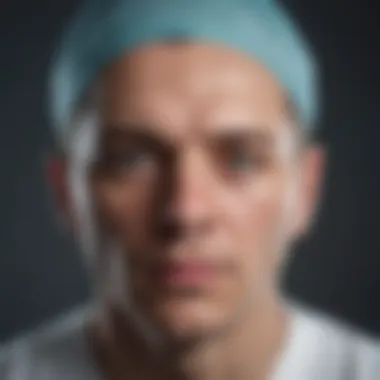

Furthermore, genetic counseling is becoming increasingly important. With genetic testing, families can better understand the risks of recurrence in future pregnancies and the potential for other syndromic presentations. Thus, genetic studies do not only enhance clinical practice but also provide insight into the broader implications of cranial development.
Outcomes Research
Outcomes research focuses on the effectiveness of surgical and non-surgical interventions for unicoronal craniosynostosis. It evaluates various factors, including surgical techniques, timing of surgery, and postoperative care, to determine their impact on the patient's development and quality of life. Data from long-term studies offer valuable insights into cognitive, physical, and social outcomes for affected individuals throughout their lifespan.
This area of research often employs methodologies such as cohort studies and retrospective analyses to gather extensive data on patient experiences. Understanding outcomes allows for the assessment of best practices and the optimization of treatment protocols. By focusing on patient-reported outcomes, researchers can track not only clinical success but also the psychosocial aspects of living with craniosynostosis.
In summary, keeping abreast of these evolving research trends is crucial for improving the diagnostic and therapeutic landscape surrounding unicoronal craniosynostosis. As science progresses, so does the potential for innovative treatment strategies that can enhance the lives of affected children and their families.
Patient and Family Support
Patient and family support plays a crucial role in the overall management of unicoronal craniosynostosis. It encompasses various forms of assistance, including emotional, psychological, and practical support. The unique challenges faced by families dealing with this condition can lead to significant stress and uncertainty. Therefore, establishing a supportive environment can positively affect both patient outcomes and family well-being.
Support systems provide essential resources to help families navigate complex medical processes. From understanding the diagnosis to exploring treatment options, having the right support can empower families. Furthermore, it can minimize feelings of isolation that often accompany such a rare condition. Engaging with healthcare teams, connecting with other families, and accessing community resources are all vital facets of effective support.
"Support is essential in guiding families through the challenges of diagnosis and treatment. By connecting families to resources and each other, we pave the way for improved outcomes and wellness."
Counseling Services
Counseling services offer tailored emotional support for families affected by unicoronal craniosynostosis. Trained professionals help families manage feelings of anxiety, fear, and sadness that may arise during the diagnosis and treatment journey. Individual or family therapy can help in addressing various emotions and facilitate open communication within the family unit.
The following are key aspects of counseling services:
- Personalized Care: Each family's experience is different. Counselors provide customized strategies to cope with the emotional impact of the condition.
- Stress Management Techniques: Families learn how to manage stress effectively, which not only benefits their mental health but also contributes to a better environment for the patient.
- Coping Mechanisms: Families acquire tools that help them navigate the medical system, manage expectations, and understand the treatment process better.
Support Groups
Support groups create a sense of community for families dealing with unicoronal craniosynostosis. These groups facilitate connections among families facing similar challenges. Sharing experiences and insights can be invaluable in understanding the emotional and practical aspects of the condition.
Benefits of support groups include:
- Shared Experiences: Families can share their stories, which fosters understanding and empathy among members.
- Information Exchange: Support groups often become a valuable source of information, where families can share resources and strategies.
- Building Resilience: The social connections formed in these groups contributes to resilience, helping families face challenges with a collective strength and support.
Ethical Considerations
The discussion surrounding the ethical considerations in the management of unicoronal craniosynostosis is critical. This topic touches upon several relevant aspects including the autonomy of patients and their families, informed consent, and equitable access to care. On one hand, it is important to empower families to make informed decisions about their child's health. On the other hand, it is necessary to ensure that these families have access to the treatments and resources that may be required for the appropriate care of their child. Considering these ethical dimensions fosters a more supportive environment for families navigating the challenges associated with this condition.
Informed Consent
Informed consent is a foundational principle when it comes to medical treatment. Families need to understand the nature of unicoronal craniosynostosis, the recommended treatment options, and the potential risks and benefits involved. By providing comprehensive information, healthcare providers empower families to make choices that are in the best interest of their child.
The informed consent process must be clear, transparent, and tailored to the specific situation. Parents may have concerns and questions; thus, healthcare professionals need to facilitate open dialogue. Recommendations can vary significantly, depending on factors like the age of the child or severity of the condition. Effective communication is essential in ensuring that consent is truly informed.
Access to Care
Access to care is a significant ethical concern that must be addressed when discussing unicoronal craniosynostosis. Disparities in healthcare access may lead to unequal treatment outcomes. Families from various socioeconomic backgrounds may face barriers that hinder their ability to obtain timely medical attention or specialized surgery. This lack of access can result in worse developmental outcomes for affected children.
Addressing this issue requires a multifaceted approach. Involving policymakers, healthcare providers, and community organizations can create awareness about these disparities. Additionally, programs aimed at providing financial assistance could help alleviate some of the burdens families face. Equitable access to care is essential for ensuring that all children with unicoronal craniosynostosis receive the treatment they need, regardless of their background.
"Ensuring access to quality healthcare services is not only a medical concern but also a moral responsibility."
By focusing on these elements, ethical considerations in the treatment of unicoronal craniosynostosis can lead to comprehensive care that is beneficial for patients and families alike.
Cultural Perspectives
Understanding cultural perspectives regarding unicoronal craniosynostosis is vital for multiple reasons. It informs healthcare professionals about how different cultures understand and respond to medical conditions, which in turn influences treatment approaches and family support. In many societies, beliefs about health shape the decisions around seeking diagnosis and treatment. Cultural values can affect whether families prioritize surgical interventions or prefer alternative healing methods.
Variations in Treatment Approaches
Treatment approaches for unicoronal craniosynostosis can vary greatly across cultures. In some cultures, there is a strong reliance on traditional medicine and local healing practices rather than surgical options. Families may prioritize consultation with a traditional healer or rely on herbal remedies, delaying potential surgical care. Conversely, in more technologically advanced societies, there is often an emphasis on surgical corrections as the primary recourse to address craniosynostosis. Such differences in treatment options necessitate an understanding of local customs and beliefs regarding health and illness.
For healthcare providers, recognizing these cultural variations is critical. It enables them to offer care that is not only medically sound but also culturally sensitive. Education about the anatomical and developmental implications of craniosynostosis can help families make informed decisions that align with their beliefs, ultimately leading to better outcomes.
Societal Impact
The societal impact of cultural perspectives on unicoronal craniosynostosis is profound. In communities where surgical intervention is viewed skeptically, children may face unnecessary delays in treatment. This can impact not only individual health outcomes but also the community's perception of modern medicine. Awareness and education campaigns are necessary in such environments to highlight the significance of early intervention and the benefits of surgical treatment.
Moreover, social barriers such as stigma surrounding physical differences can affect how children with craniosynostosis are treated in their communities. They may face challenges in social integration or support, creating long-term effects on their psychological and emotional wellbeing.
"Understanding cultural perspectives provides a foundation for improving the health and quality of life for children with craniosynostosis across different societies."
By fostering open discussions about these issues among families, healthcare providers can work toward creating a more inclusive approach to treatment that respects cultural values while prioritizing health outcomes. Efforts to bridge this gap can eventually lead to more effective healthcare strategies and an enhanced support system for affected individuals and their families.
Epilogue
The conclusion is a crucial part of this article, synthesizing the main points discussed throughout the text. It reinforces the significance of understanding unicoronal craniosynostosis by highlighting key findings related to its etiology, diagnosis, and treatment options. Through early diagnosis and well-planned interventions, outcomes for individuals with this condition can dramatically improve, underscoring the need for awareness and education in clinical practices.
Moreover, recognizing the multifaceted nature of this disorder encourages a holistic approach in managing patients. This includes considering their long-term developmental needs, the importance of family support, and the evolving research landscape surrounding craniosynostosis. The conclusion emphasizes that an integrated understanding of the medical, emotional, and social dimensions of this condition is vital for effective care.
"A comprehensive approach is key to improving the quality of life for individuals with unicoronal craniosynostosis."
Key Takeaways
- Unicoronal craniosynostosis is a condition that requires early intervention to prevent complications.
- Both genetic and environmental factors play a role in its development.
- Diagnostic strategies must include physical exams, imaging, and potentially genetic testing for comprehensive evaluation.
- Surgical interventions are often necessary, as non-surgical approaches can be limited in effectiveness.
- Support systems for families and ongoing research are essential for improving patient outcomes.
Future Directions in Research
Future research must focus on several critical areas:
- Genetic Studies: Identifying specific genetic markers associated with unicoronal craniosynostosis can enhance understanding of its origins and potential preventive measures.
- Clinical Outcomes: Collecting data on long-term outcomes for individuals who undergo various treatment options will help refine surgical techniques and post-operative care strategies.
- Supportive Care: Investigating the impact of psychological and social support on families dealing with this condition can provide insights into better care practices.
- Technological Advances: Utilizing new imaging technologies or surgical tools may improve surgical precision, leading to better outcomes.
In summary, a combined focus on genetics, outcomes tracking, and holistic patient support can pave the way for improved strategies in handling unicoronal craniosynostosis.



